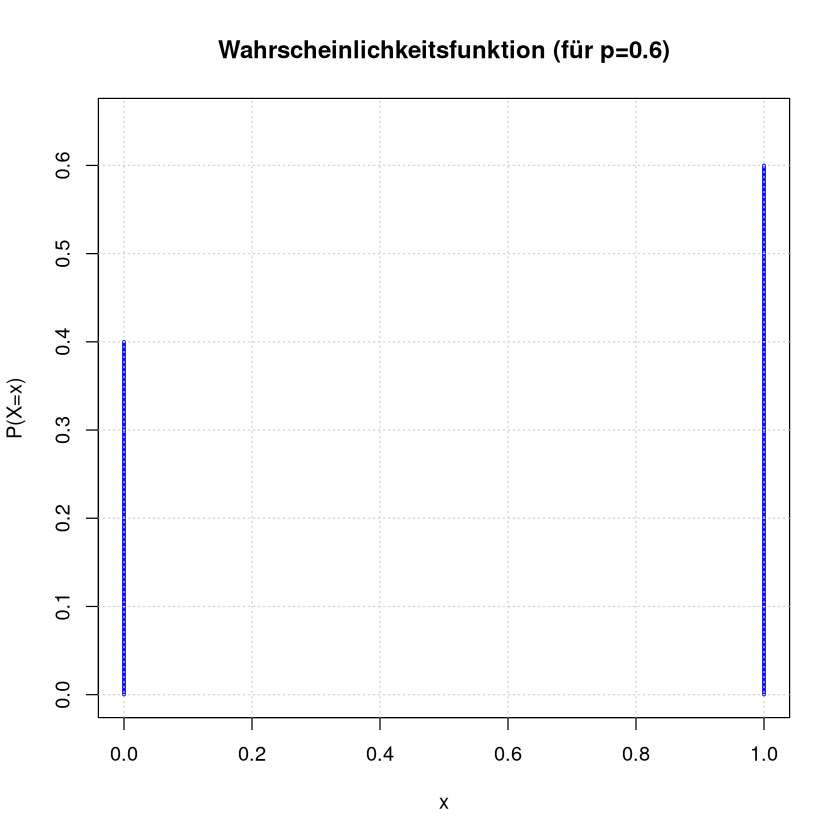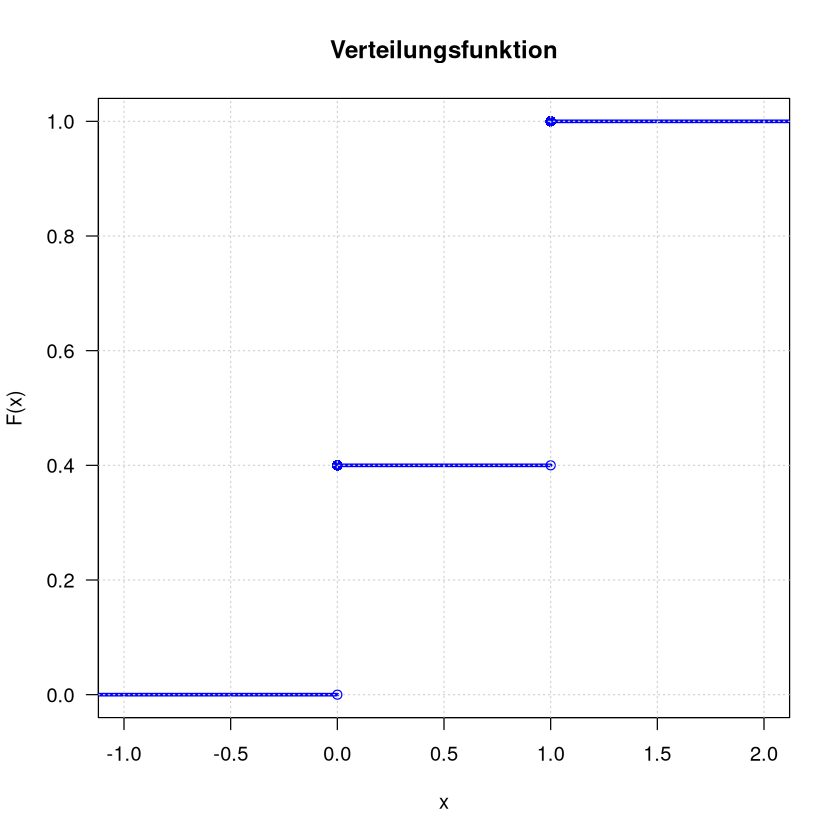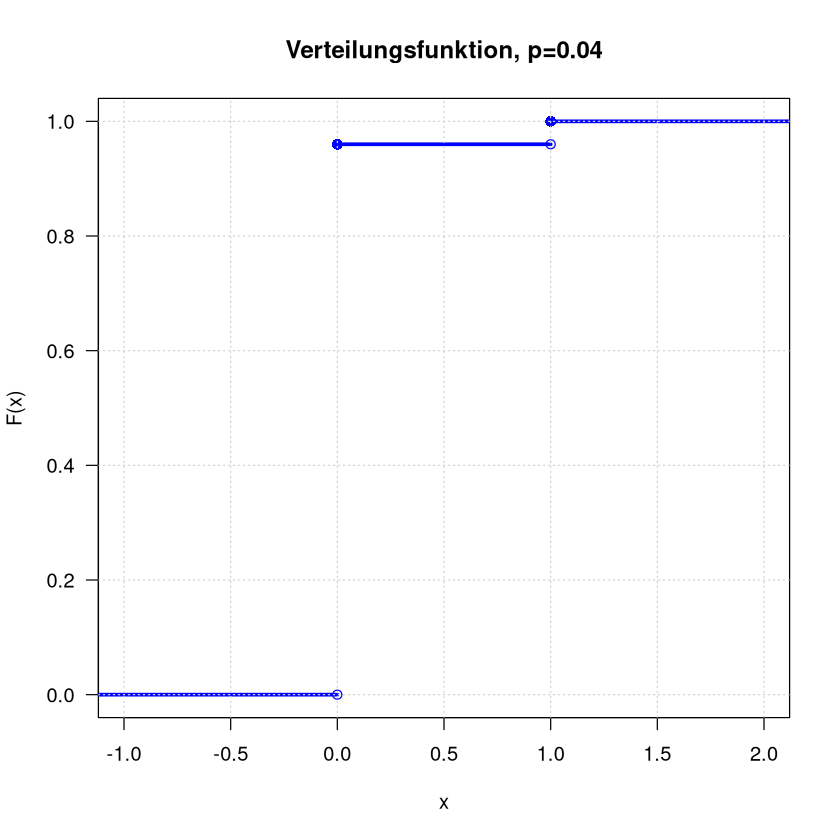Bernoulli-Verteilung#
Definition#
Eine Bernoulli-Verteilung liegt vor, wenn eine Zufallsvariable nur zwei verschiedene Werte annehmen kann.
Definition
Sei \(0\leq p\leq 1\). Die Zufallsvariable \(X\) heißt Bernoulli-verteilt, falls sie entsprechend Tabelle
Wert \(x\) |
\(0\) |
\(1\) |
|---|---|---|
\(\mathbb P(X=x)\) |
\(1-p\) |
\(p\) |
verteilt ist. Wir schreiben dann kurz:
Anwendung#
Typische Anwendungsszenarien:
Münzwurf
Qualitätskontrolle: defekt, nicht defekt
Klinische Studien: krank, gesund
Zielschuss: treffen, nicht treffen
usw. (immer wenn ein Zufallsexperiment genau 2 mögliche Ausgänge gibt)
Eigenschaften#
Gilt \(X\)
Erwartungswert:
Varianz:
Stabdiagramm:
Show code cell source
x <- c(0,1)
probs <- c(0.4,0.6)
plot(x = x, y = probs, col = "blue", type = "h", lwd = 3,ylim=c(0,0.65),
main = "Wahrscheinlichkeitsfunktion (für p=0.6)", ylab = "P(X=x)", xlab = "x")
grid()
Verteilungsfunktion
Show code cell source
plot.dcdf <- function(x, prob , col="blue", lwd=3, ...) {
y <- c(0,cumsum(prob))
cdf <- stepfun(x=x, y=y, right=TRUE)
plot(cdf, verticals=FALSE,
lwd=lwd, col=col, las=1,
xlab="x", ylab="F(x)", ...)
points(x,cumsum(prob),pch = 16, col=col, cex=1.2)
}
plot.dcdf(c(0,1), c(0.4,0.6), main="Verteilungsfunktion")
grid()
Beispiel#
Der Ausschussanteil in einer Produktion liege bei \(4\%\). Wir greifen zufällig ein Teil aus der laufenden Produktion heraus. Die Zufallsvariable die das modelliert ist \(X\sim\mathrm{Ber}(0.04)\).
Es gilt also \(\mathbb P(X=0)=0.96\) und \(\mathbb P(X=1)=0.04\) und
Die Standardabweichung: \(\sqrt{\mathrm{Var}(X)} = 0.195959\)
Verteilungsfunktion:





